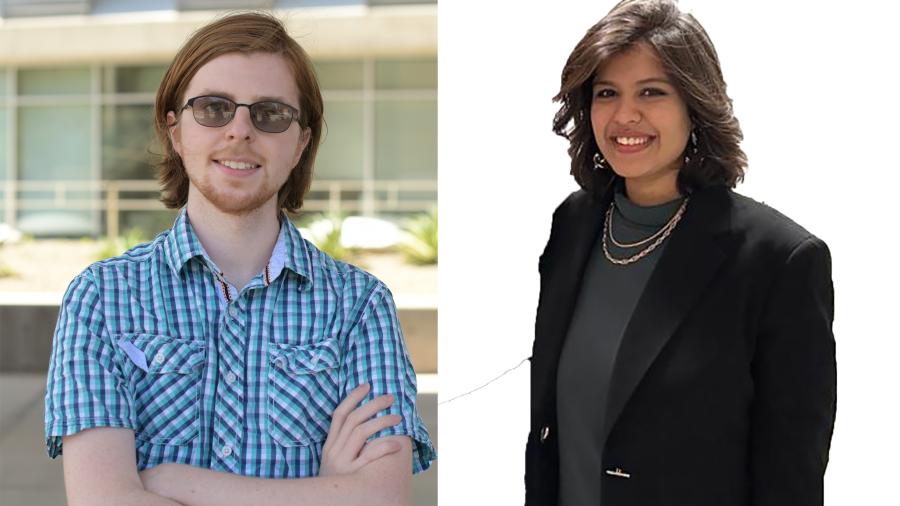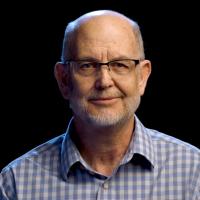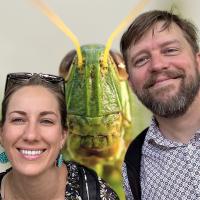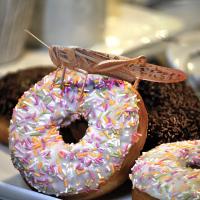Souls of SOLS, March 2025

Mehreen Tahir –– Environmental Life Sciences PhD
Desert locusts, a grasshopper-like insect endemic to parts of Africa, Asia, and the Middle East, can swarm in numbers so great that they darken the skies. When a swarm passes through a region, they decimate the local agriculture, depleting resources for many people who already experience food insecurity. Growing up in Pakistan, Mehreen Tahir remembers moments in her childhood when the swarms severely affected her family.
“My family wouldn't have food. We would see a severe increase in prices, and we would not be able to eat much at all. And at that time, like, you know, my mom would be like, ‘I'm not hungry,’ and I didn't really notice it registers to me as a kid that well, is she not hungry, or do we just not have enough resources for her to have food because she has three kids to feed?”

Now, as a biochemist and PhD candidate working with the Global Locust Initiative, Tahir is working to help create pest management techniques to help the millions of people in the world whose lives are still impacted by locust outbreaks. Locusts are typically managed through pesticides, which can be harmful to both humans and other species in an environment. Tahir is working to help improve the effectiveness of less harmful biopesticides.
“Farmers don’t want to use biopesticides because they’re slow to action. If an outbreak is happening, you want to curb it as quickly as possible.”
So, Tahir investigates how to make locusts more susceptible to biopesticides by studying their diet. Tahir feeds the locusts in her lab diets that vary in both protein and carbohydrate levels, then exposes them to biopesticides to see how the locusts fare. So far, she’s found that locusts eating more proteins are more susceptible. That finding might make farmers more willing to switch to biopesticides in combination with fertilizers that increase the amount of protein in the soil, Tahir explains: “If farmers are actively fertilizing their fields, not only does it increase the [crop] yield, but it also increases the nitrogen content associated with protein.”
Tahir’s upbringing motivates her extracurricular activities as much as it does her research.
“I grew up in a region where women were not allowed to go to school. Even today it is severely looked down upon... So coming to the US was a transformative experience for me, because women already had a seat at a table, whereas in Pakistan, I was still fighting for that.”
Tahir fights hard to make education accessible for other students. In her first year at ASU, Tahir started volunteering as part of the Inclusive Excellence Task Force with the School of Life Sciences. Later, she got involved with the Graduate Student Government, for which she now serves as the Vice President of Professional Development. In that role, she’s fought to create more opportunities for student funding, like a newly created Student Support Award.
“Your potential should never be tied to your financial upbringing or financial constraints,” Tahir insists, “You should be able to dream... So, in my leadership... the biggest thing for me has been to ensure that people’s financial upbringing should not be constraining them from applying to anything.”
Tahir has a lot of gratitude for the people who’ve helped her become both an academic and advocate: “I want to acknowledge my advisors, Dr. Arianne Cease and Dr. Jon Harrison. They’ve always been very supportive... And I’m very grateful to GSG for giving me the space to fight for change. I also want to dedicate my success to all the women around the world, especially the women in Pakistan, women living in oppression. If you can be brave enough to dream, it’s difficult, but there is a way forward.”
Shawn Mahoney –– Animal Behavior PhD
There’s a lot to love about honeybees: on top of making sugar-sweet honey, they are essential pollinators for many of the foods we eat. Plus, they’re pretty cute. But Shawn Mahoney, a PhD candidate in the Smith lab at ASU, is less interested in what honeybees do, and more interested in how their brains work.
“Humans have about 10 billion neurons,” Mahoney explains. “Honeybees only have about a million. And yet they can do these super computationally complex things where they’ll go from flower to flower, zigzagging around, and when they’re done, they’ll fly in a straight line back to the hive. They have to do some complex 3D trigonometry [for that].”
Mahoney’s research has to do with a very specific brain function in honeybees: how they respond to smell. Mahoney inserts a tiny probe into the brain of a living honeybee - either in the antennal lobe or the mushroom bodies - and records the bees' response to puffs of odor at varying wind speeds. That allows him to study how different areas of the honeybee brain respond to smell in different wind conditions – a question that’s understudied, he says.
“Obviously, there are the odor molecules hitting your nose, your sensory receptors. But there’s also the effect of the wind that carries that odor to you in the first place. So I study the touch effect of the wind in the honeybee brain.”
To do that, Mahoney exposes the honeybees to different concentrations of scents at varying wind speeds to understand whether they detect and respond to those scents. After monitoring the neural activity in response to those different conditions, he can calculate what combinations of environmental effects the bees respond to most commonly.
Mahoney has dreamed of researching animals for a long time. But the specifics of his dream have changed quite a bit. As an undergraduate at Indiana University, he started out studying paleontology.
“It was super cool, and I learned some great techniques. But I felt like I wanted to work with living organisms. Then I found I really enjoyed neuroscience and genetics... And so, when it came time to apply to graduate school, that’s what I wanted to focus on.”
Though Mahoney hopes to continue his work in neuroscience, and perhaps specifically the neuroscience of honeybees, he’s found some other passions during his time at ASU that he’s open to pursuing further in the future. One of his new passions is science communication – a field he’s recently started to explore – as well as teaching. He works as a TA for an online undergraduate course in which students design research projects through working with videos of a honeybee colony.
“You really get to see the growth of the students through their research projects. They’re really engaged and super motivated, which is great. You don’t see that in a lot of other courses.”




